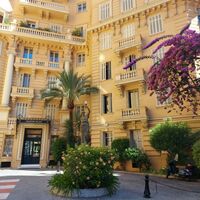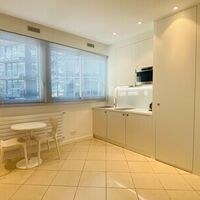Monaco's districts
The Principality of Monaco, renowned for its luxury and exceptional setting, is made up of neighborhoods with diverse identities, ranging from the glamour of Monte-Carlo to the authenticity of La Condamine. Each of its neighborhoods, like Fontvieille with its modern port, or Monaco-Ville, the historic heart perched on the Rock, contributes to the richness and uniqueness of this prestigious territory.

La Condamine
La Condamine is one of Monaco's historic districts, located between the Port Hercule and the Rock of Monaco. It's a lively area, known for its typical Place d'Armes market, where Monegasques gather every day to buy fresh local produce. La Condamine is also home to many shops, restaurants and offices, as well as the marina, where luxury yachts are moored. This district is also appreciated for its authentic, warm atmosphere, which reflects the traditional Monegasque way of life.

Fontvieille
Fontvieille is Monaco's newest district, built on land reclaimed from the sea in the 1970s. This area is both residential and industrial, while also offering green spaces and leisure facilities. Here you'll find the Stade Louis-II, home to many sporting events, as well as the Centre Commercial de Fontvieille. It's a modern, quiet, family-friendly neighborhood, where you can enjoy breathtaking views of the Mediterranean Sea.

Larvotto
Le Larvotto is Monaco's seaside district, renowned for its beaches and luxury hotels. The waterfront is lined with restaurants and cafés where you can enjoy al fresco dining with splendid views of the Mediterranean. It's also a residential area, home to some of Monaco's most prestigious apartments. The neighborhood is also home to the Grimaldi Forum, a renowned conference and exhibition center, as well as several art galleries and fashion boutiques. Larvotto thus combines relaxation and culture, offering a vacation atmosphere all year round.

Jardin Exotique
The Jardin Exotique (Exotic Garden) district is located on the heights of Monaco and offers spectacular views of the principality and the sea. Its main attraction is the Jardin Exotique de Monaco, an exceptional botanical garden home to a wide variety of succulents and cacti from around the world. This residential neighborhood is also appreciated for its calm and proximity to the Musée d'Anthropologie Préhistorique and the Observatoire de la Grotte. Jardin Exotique is a neighborhood that attracts nature lovers and those seeking a tranquil living environment while remaining close to the heart of Monaco.

Monaco-Ville (reserved area)
Monaco-Ville, also known as Le Rocher, is the historic heart of the Principality. Perched on a rocky promontory, it houses the main institutions, including the Palais Princier, official residence of the Grimaldi family, and Monaco Cathedral. It's also home to the Musée Océanographique, an international symbol of marine research. Monaco-Ville is a charming district, with picturesque alleyways, colorful houses and small local shops. Its medieval ambience contrasts with the luxury and modernity of the Principality's other districts, making Monaco-Ville a unique place steeped in history and culture.

Les Moneghetti
Les Moneghetti is a residential neighborhood located northwest of Monaco, on the border with France. It's a neighborhood appreciated for its peaceful atmosphere, far from the hustle and bustle of Monaco's other areas. It's known for its elegant buildings, often overlooked by hanging gardens offering panoramic views of the sea and surrounding mountains. It's a residential area where families and retirees find a pleasant, tranquil living environment.

Monte-Carlo
Monte-Carlo is Monaco's most famous district, synonymous with luxury and glamour. Within the Carré d'Or it is home to the famous Casino de Monte-Carlo, one of the world's most prestigious casinos, as well as the Monte-Carlo Opera House and the Hôtel de Paris. This district is the center of social life, where haute couture boutiques, Michelin-starred restaurants and luxury hotels rub shoulders. Monte-Carlo also hosts major events such as the Monaco Formula 1 Grand Prix. It's a lively, refined district, where visitors flock to enjoy the prestige and unique ambience it exudes.

Ravin de Sainte-Dévote (reserved area)
The Ravin de Sainte-Dévote is a reserved area nestled between Monte-Carlo and La Condamine, marked by Monaco's religious history. It's home to the church of Sainte-Dévote, dedicated to the principality's patron saint. Every year, a procession in honor of Sainte Dévote is held here, reinforcing the cultural and religious importance of the area. The area is a stop-off point for the famous Monaco Formula 1 circuit, particularly during the Sainte-Dévote bend, one of the most emblematic on the course. Despite its small size, the Ravin de Sainte-Dévote embodies an important part of Monaco's history and traditions.

La Rousse
The La Rousse district, also known as Saint-Roman, is a residential area on Monaco's eastern border, bordering the French town of Roquebrune-Cap-Martin. It's a neighborhood prized for its modern residential towers, including the famous Tour Odéon, one of Europe's tallest and most prestigious skyscrapers. La Rousse offers an urban living environment, while remaining close to beaches and green spaces. This neighborhood is popular with families and expatriates seeking a compromise between comfort, modernity and accessibility.

Mareterra - Anse du Portier
Mareterra, also known as Anse du Portier, is an ongoing urban development project that is part of Monaco's drive to expand its territory by the sea. This new district, being built on land reclaimed from the Mediterranean, will be a model of environmental sustainability, with green spaces, luxury residences and modern infrastructures meeting strict ecological standards. Mareterra symbolizes the future of Monaco, combining architectural innovation, respect for the environment and exclusivity. This district will be an extension of Monaco turned towards the sea and designed for a luxurious and sustainable lifestyle.














